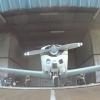poweroff 180
-
Members Online
- thomas1142
- tcal780
- Jft1025
- Marc_B
- PMcClure
- Hank
- amillet
- Blaze
- N31DM
- 00-Negative
- atpdave
- M20 Ogler
- spistora
- AndreiC
- PT20J
- TheAv8r
- AJ88V
- exM20K
- Daved
- YeloSub
- BrentS
- Jeff Shapiro
- BlueSky247
- ElkoRandy20J
- N201MKTurbo
- BadMooneyRising
- Jim F
- mike_elliott
- 885EW
- jamesm
- Dgeyer
- Sabremech
- kortopates
- FlyboyKC
- neilpilot
- eman1200
- TCC
- Jeph357
- Andy95W
- GeeBee
- toto


Recommended Posts
Join the conversation
You can post now and register later. If you have an account, sign in now to post with your account.